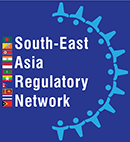Action point 18 - Strategy to facilitate reliance for medical devices, including IVD
Last update: 04/07/2024
Background
The South-East Asia Regulatory Network (SEARN) was created in 2016 by the 11 Member States of the WHO South-East Asia Region to develop and strengthen regulatory collaboration, convergence and reliance in the South-East Asia region over shared regulatory issues and challenges.
As a matter of fact, one of the main objectives of the network is to ‘Identify and develop potential work sharing and reliance processes to help address common work areas and optimize use of existing regulatory capacities and expertise available in the region.’
To address this need, the Assembly adopted on 27 July 2023 a Strategy to facilitate reliance. However, this strategy, which continues to be developed during this workplan, does not address medical devices. Nevertheless, as part of the survey which was conducted to support this strategy, Overall, the Member States generally expressed an interest in SEARN supporting the development of reliance in the same functions where it is currently used (especially Marketing Authorizations, Vigilance, Regulatory Inspections, and Laboratory Testing), but with a focus on products other than medicines, including medical devices.
Further, a Review of the gaps in Medical Devices regulation was conducted during the 2022-2023 work plan, during which one of the main gaps identified was the need to strengthen reliance.
Considering the specificities of medical devices regulation, the Assembly created in 2023 a dedicated action point (AP18) in the SEARN workplan, led by Working Group 5 (WG5) Medical devices.
Main objective
Draft a strategy to facilitate reliance for medical devices, including IVDs.
Scope and definitions
Please refer to the Strategy to facilitate reliance.
Enabling reliance in the region
Prioritized areas for reliance
The prioritized areas were selected considering the results from the survey conducted to support the development of the 2023 Strategy to facilitate reliance.
After further discussions, WG5 decided to focus this strategy on Marketing Authorizations and Regulatory Inspections.
Converging on the definition of reference regulatory authorities in SEARN
Please refer to the Strategy to facilitate reliance.
Possible Criterion for selecting a Reference Regulatory Authority
In the context of the prioritized functions, the following document was developed to provide guidance on possible criterion for selecting a reference regulatory authority.
For reliance, the ultimate requirement is that the relying NRA should have sufficient trust in the reference authority to use the output of their work in their own regulatory decision-making system, which also requires that the two regulatory systems are sufficiently comparable. In order to achieve this the document below presents some examples of criteria which may be considered to define the relying strategy for medical devices.
Possible criteria for selecting Reference Organizations for medical devices
Minimum information required for reliance
The below document was developed to support the implementation of this strategy. There would be 2 main usages of this information:
- Recommendations to guide relying countries on what is required as a minimum for them to be able to rely on other organizations.
- Recommendations to SEARN countries on what to publish/make available (in relation with AP3 information sharing and AP4 internal platform) in order to facilitate reliance from other countries on their own decisions.
Acknowledging that the implementation of these recommendations may require addressing practical and technical challenges, and in some cases further discussions and agreement of other authorities, the adoption by the Assembly of SEARN will be followed by an implementation period of two years.
Effective communication between reference authority, applicant and NRAs is also required to ensure that the sameness of the product is maintained after approval. The sharing of some information may require a Memorandum of Understanding and/or a Confidential Disclosure Agreement.
The information identified in the below document intends to present the minimum information required for reliance. This minimum information would generally be expected for higher risk medical devices and would not usually be required for low-risk medical devices. For reliance, the ultimate requirement is that the relying NRA should have sufficient trust in the reference authority to use the output of their work in their own regulatory decision-making system. Abridged assessment may require additional information.
Reference authorities and organisations
Identification of Reference authorities and organisations
In the context of this strategy, some preliminary mapping of possible reference authorities and organizations was conducted.
The Global Harmonization Task Force (GHTF) was conceived in 1992 in an effort to achieve greater uniformity between national medical device regulatory systems. The GHTF was comprised of five Founding Members:
- Australia
- Canada
- European Union,
- Japan
- United States
The GHTF was later replaced by the International Medical Device Regulators Forum (IMDRF) which is continuing the work of the GHTF.
Historically, the founding members of the GHTF have played a central role in developing the regulation of medical devices, and SEARN members have commonly relied on their work. Awaiting for the development of the global benchmarking tool PLUS Medical Devices and its implementation, and possibly one day the extension of the WHO-Listed Authorities to medical devices, SEARN Members agreed to us the GHTD as reference authorities in the context of this strategy.
In addition, WG5 agreed to consider in this work Singapore HSA as it is a key leading authorities in ASEAN in the context of the ASEAN Medical Device Directive (AMDD).
WHO was also considered as a reference organisation in the context of its prequalification activities.
Next steps
- Worksharing on identifying and mapping reference authorities and organisations for prioritised regulatory decisions for medical devices and where to find the information.
- Conducting a workshop on reliance for medical devices
- Any other action to support the implementation of reliance by SEARN Members
